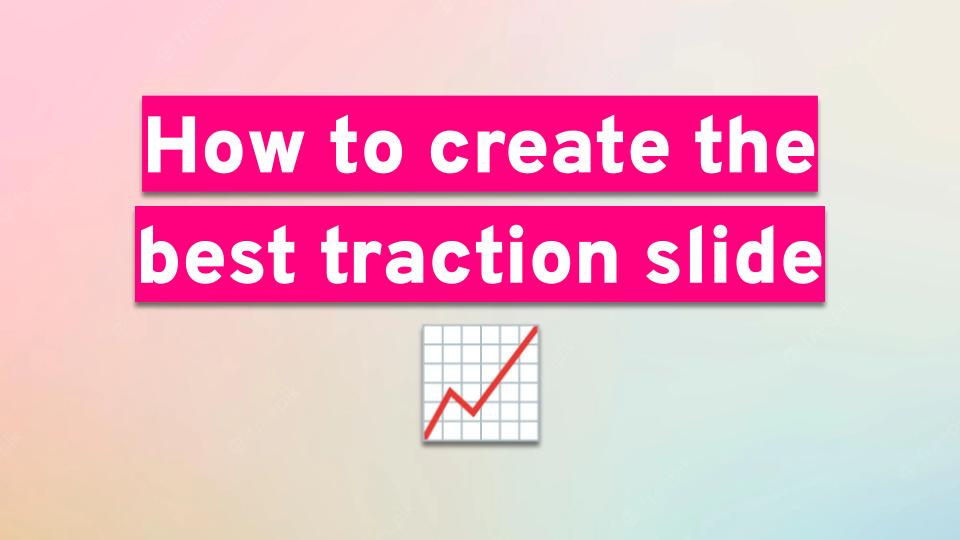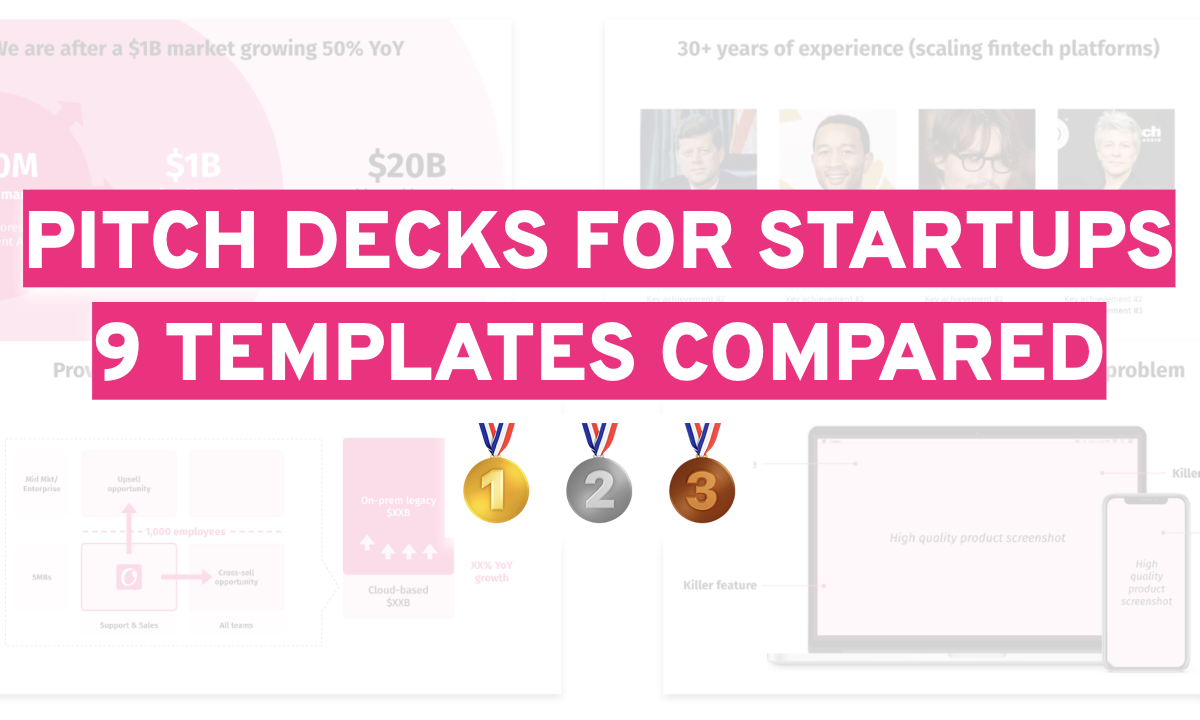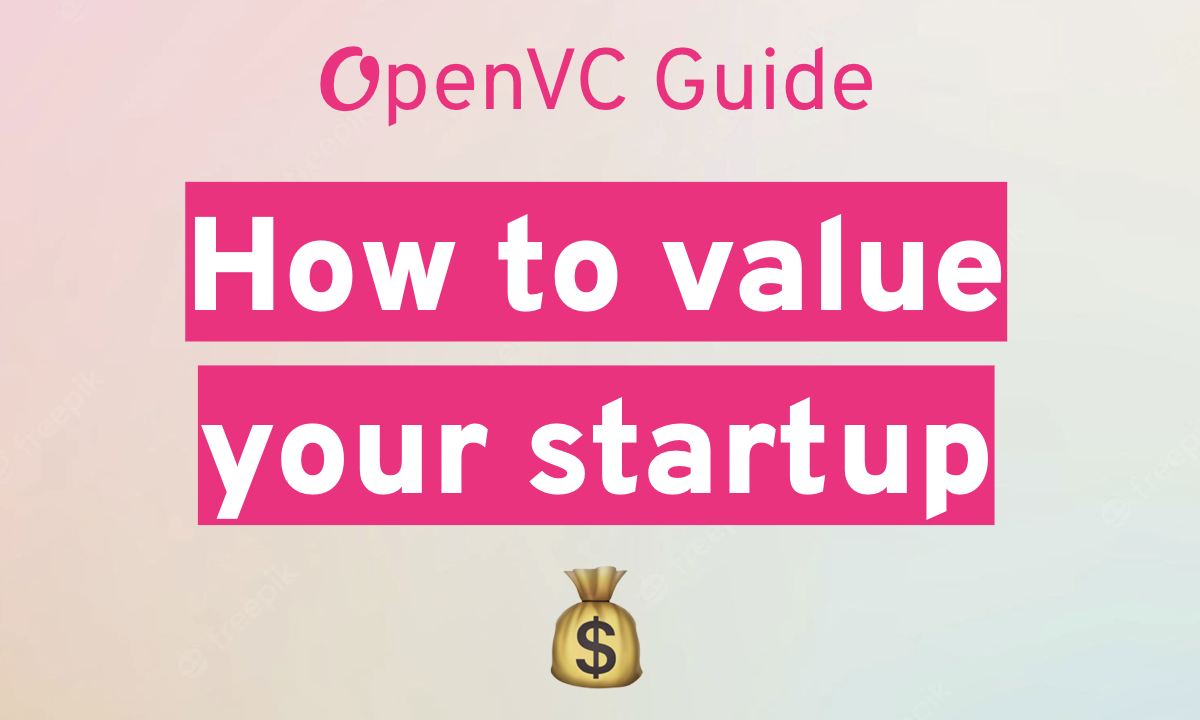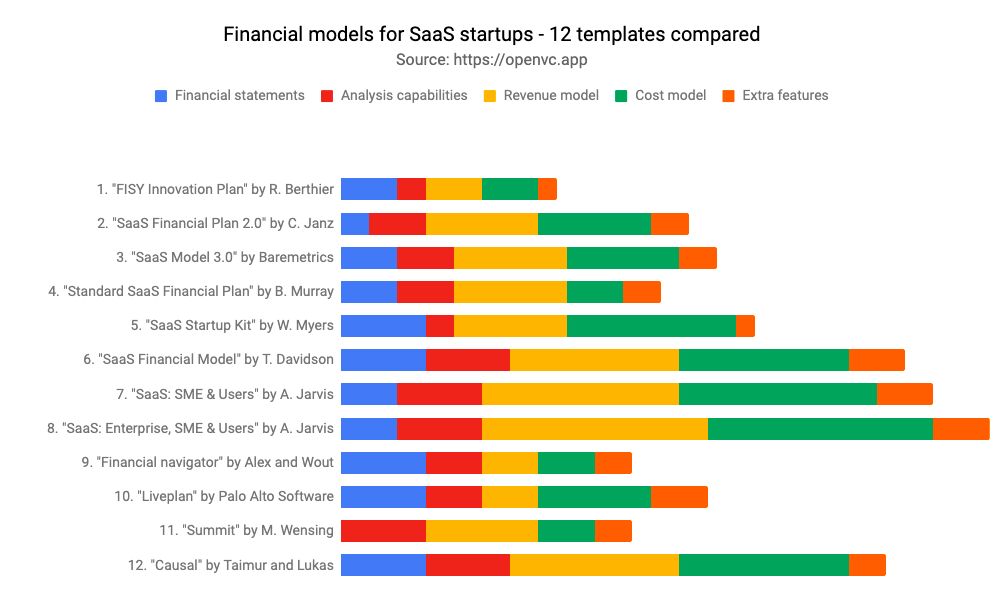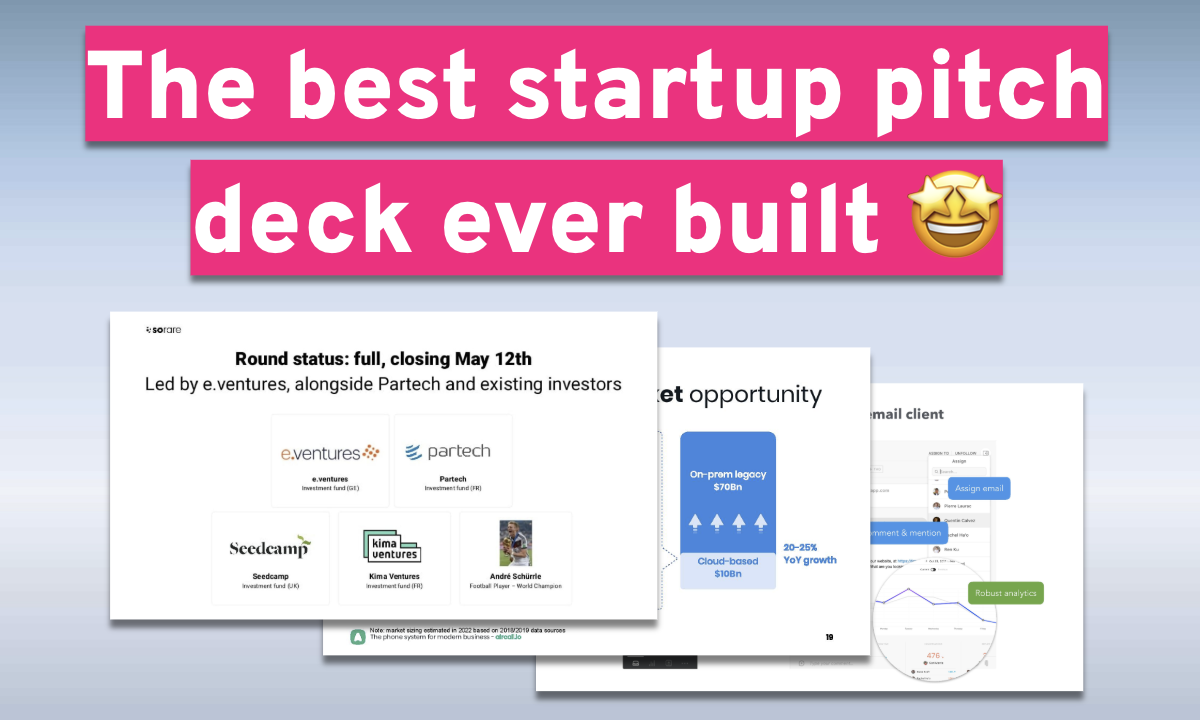Table of Contents
What is a Traction Slide?
What progress has your startup really made so far?
The traction slide is the opportunity to demonstrate your startup’s momentum and validate your business idea. Here, you can share tangible proof of success, whether that’s in the form of revenue, growth metrics, user adoption, partnerships, or customer feedback.
Investors are drawn to startups that show signs of success, as it signals reduced risk and greater potential for scaling. Your traction slide highlights the milestones you’ve achieved, helping investors visualize the trajectory of your business and the opportunity it represents.
For startups that already have customers or revenue, this slide is where you showcase your growth metrics, such as month-over-month (MoM) growth, annual recurring revenue (ARR), or customer acquisition costs (CAC). For pre-revenue or early-stage startups, focus on other indicators of traction, like user engagement, app downloads, partnerships, or testimonials.
The goal is to strike a balance between quantitative data ( sales, users, or leads) and qualitative proof points (customer stories or press mentions). This shows both the numbers behind your growth and the real-world impact you’re having in the market.
Your traction slide should communicate two key ideas: 1). That your startup is progressing rapidly, and 2). Now is the right time for investors to get involved.
Pro Tip
If your startup is pre-traction, use this slide to emphasize early indicators of success, such as strong interest from pilot users, successful prototypes, or feedback from industry advisors. This can be just as valuable as traditional traction metrics in the early stages.
What Do Investors Look for on the Traction Slide?
- Evidence of growth (user acquisition, revenue, engagement).
- Validation of product-market fit through (customer feedback or usage metrics).
- Momentum in key areas like partnerships, press coverage, or sales.
- Indicators that your startup has a sustainable growth strategy.
- Proof that your metrics align with the problem and market you’re addressing.
🤔 What Questions Should a Traction Slide Answer?
- What progress has your startup made to date?
- Are your growth metrics healthy and scalable?
- What milestones have you achieved that validate your business model?
- How do customers or users feel about your product?
- Have you reached or are you approaching product-market fit?
❌ Common Mistakes to Avoid
- Believing an MVP is traction.
- Getting testimonials from friends, ex-colleagues, or other people with no authority or credibility.
- Pointing to competitors' numbers and claiming them as validation for your product.
- Highlighting vanity metrics – investors will see right through.
- Skipping this slide entirely if you’re pre-traction—use early signals instead.
How to Create a Traction Slide That Investors Will Love
✅ Traction Slide Best Practices
- Focus on key metrics that reflect real progress and align with your market.
- Highlight growth trends with visuals like graphs or charts (e.g., a hockey stick growth curve).
- Include logos of notable customers, press mentions, or partners to build credibility.
- Incorporate short testimonials or NPS scores to show customer satisfaction.
- Be concise and impactful—focus on 3-5 critical metrics or milestones.
✍️ Traction Slide Content
- Headline: A strong statement summarizing your traction (e.g., “50% MoM growth with 10,000 active users”).
- The Right Metrics: ARR for SaaS, GMV for marketplaces, GTV for paytech, DAU for social media, etc.
- Qualitative Proof Points: Add quotes, customer feedback, or app store rankings to humanize your metrics.
-
Logos: Feature logos of press mentions, strategic partners, or marquee customers.
🎨 Traction Slide Design
- Data-Driven Visuals: Use line charts, bar graphs, or pie charts to make your metrics stand out.
- Minimal Text: Let the numbers and visuals speak for themselves; avoid cluttering the slide.
- High-Quality Logos: Ensure all customer or partner logos are sharp and professional.
- Consistent Branding: Align the design with your deck’s overall aesthetic.
- Whitespace: Use negative space to make key metrics and visuals pop.
Traction Slide Examples
Chilipiper
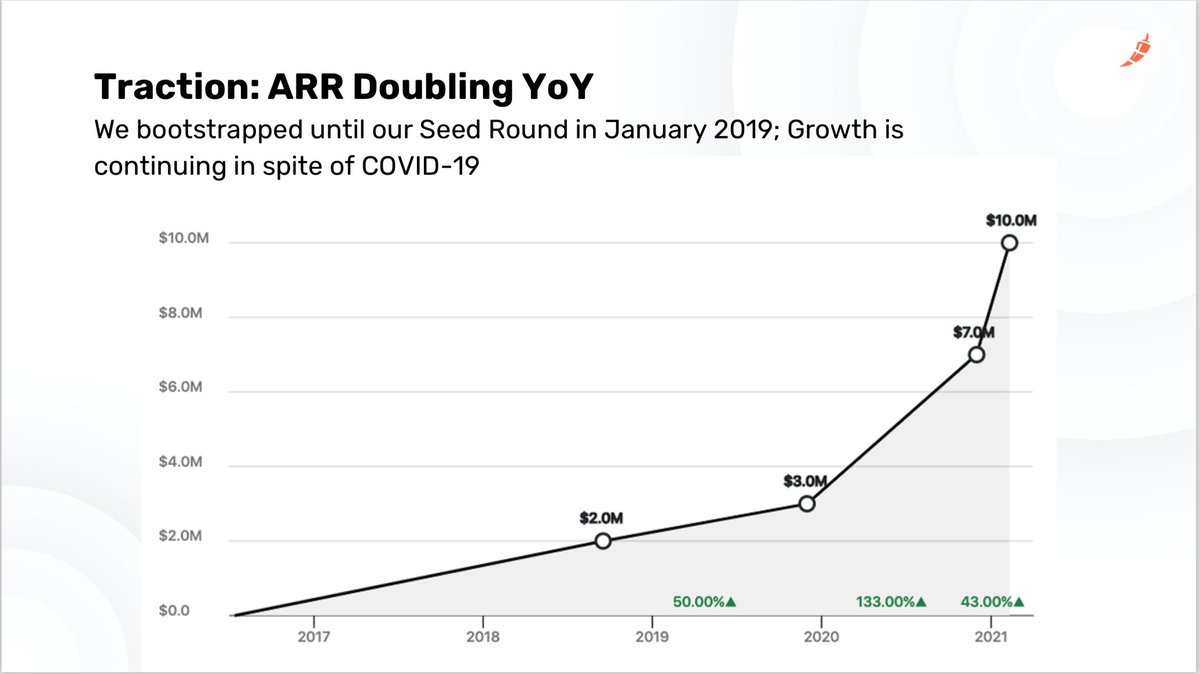
Coinbase
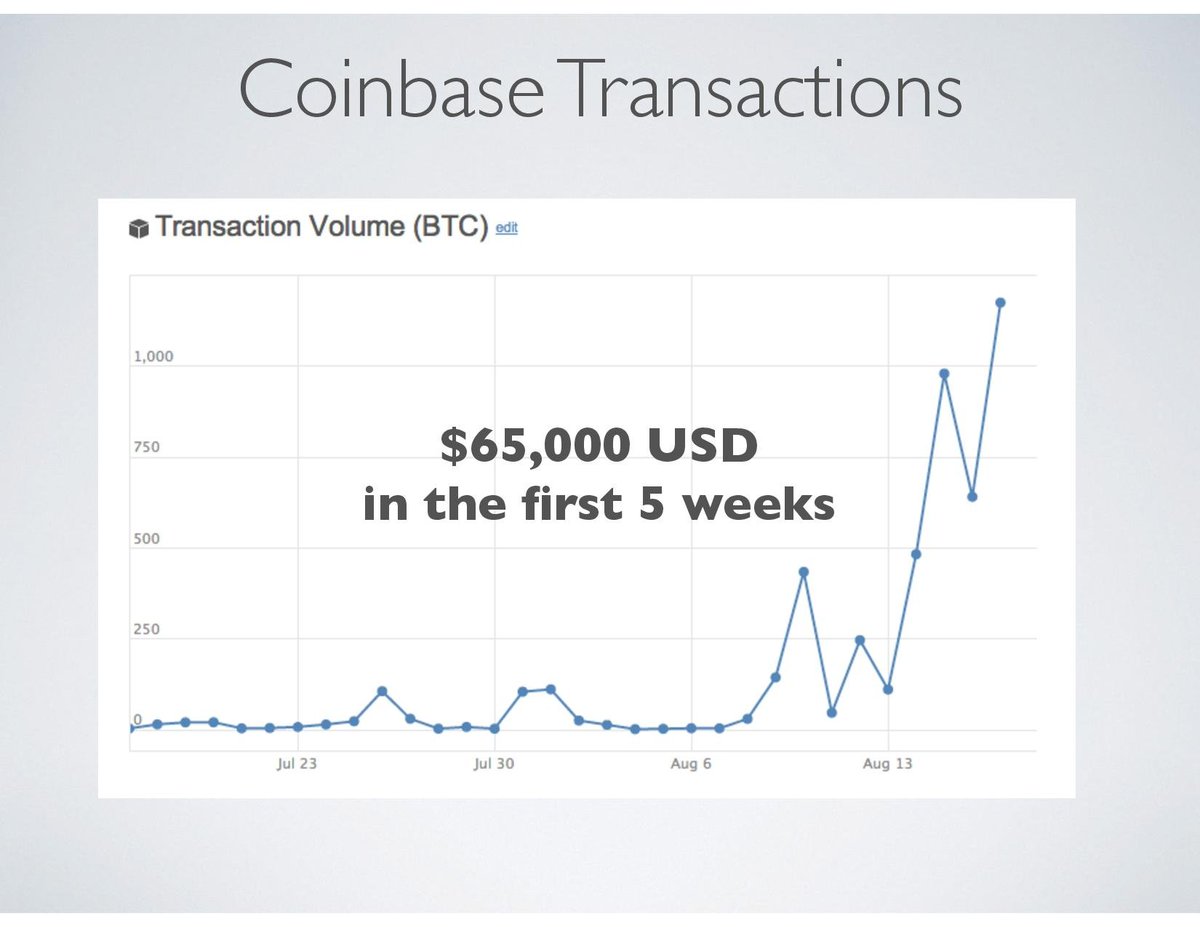
Dixa
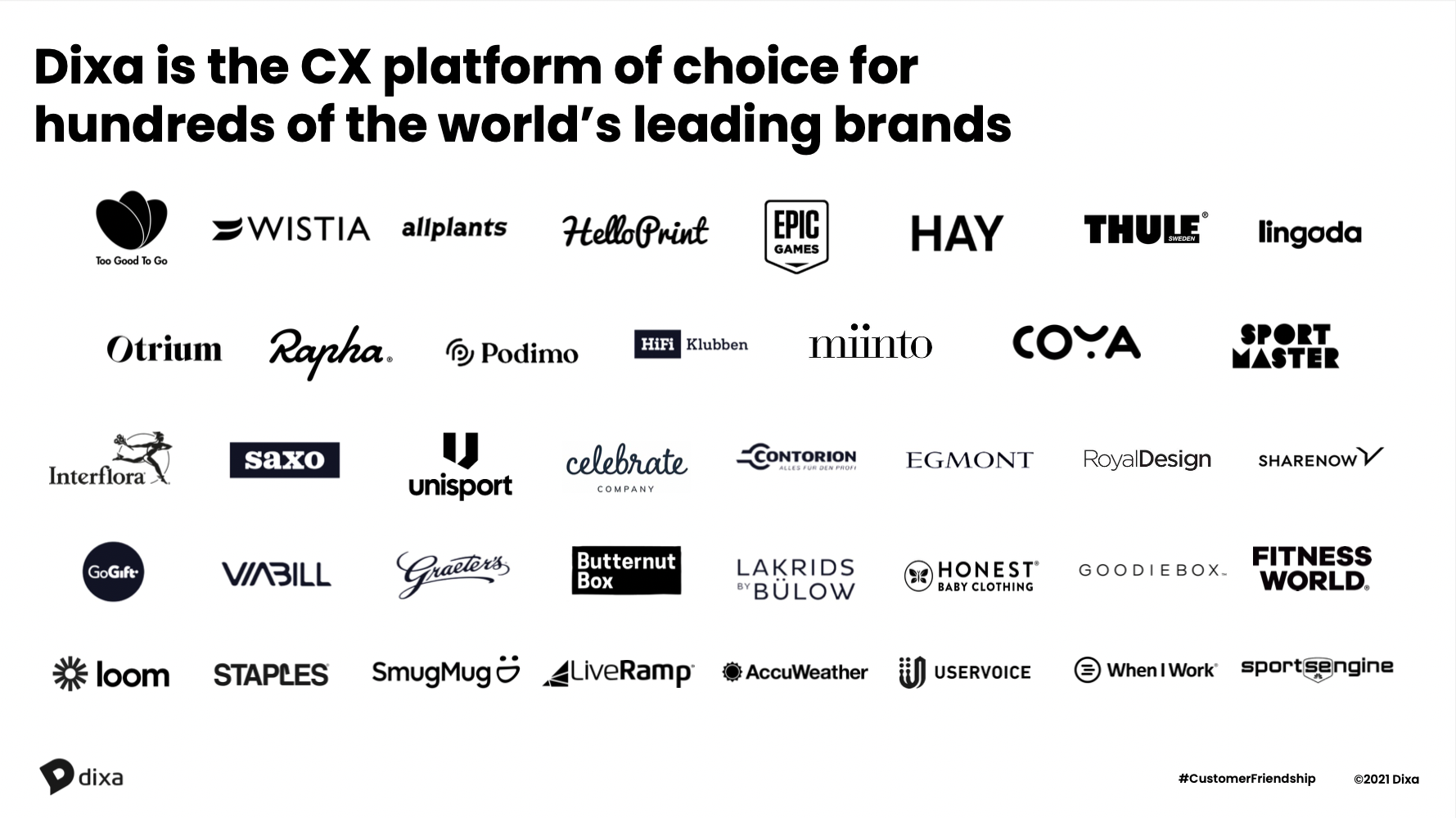
Flo
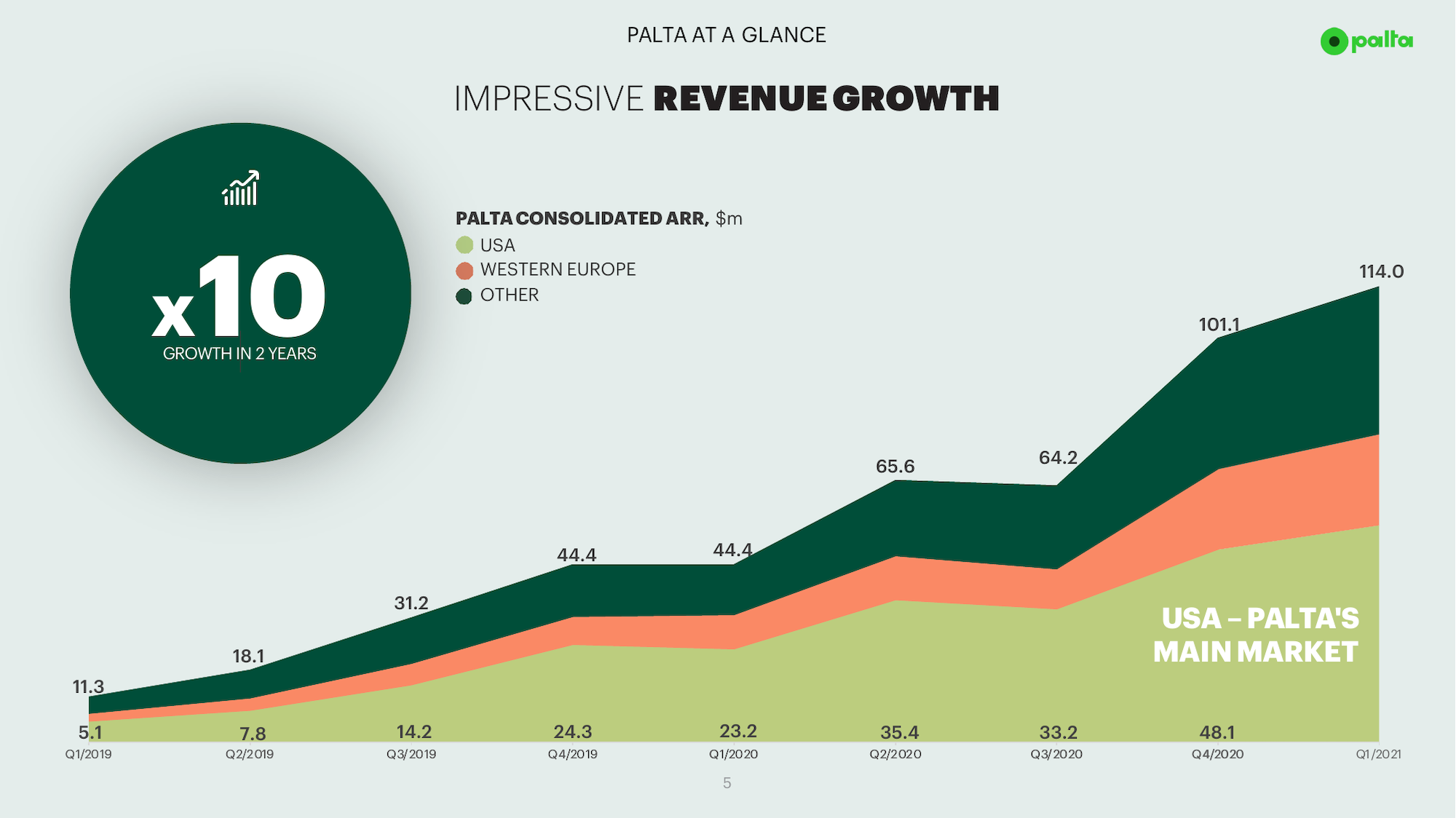
Aircall
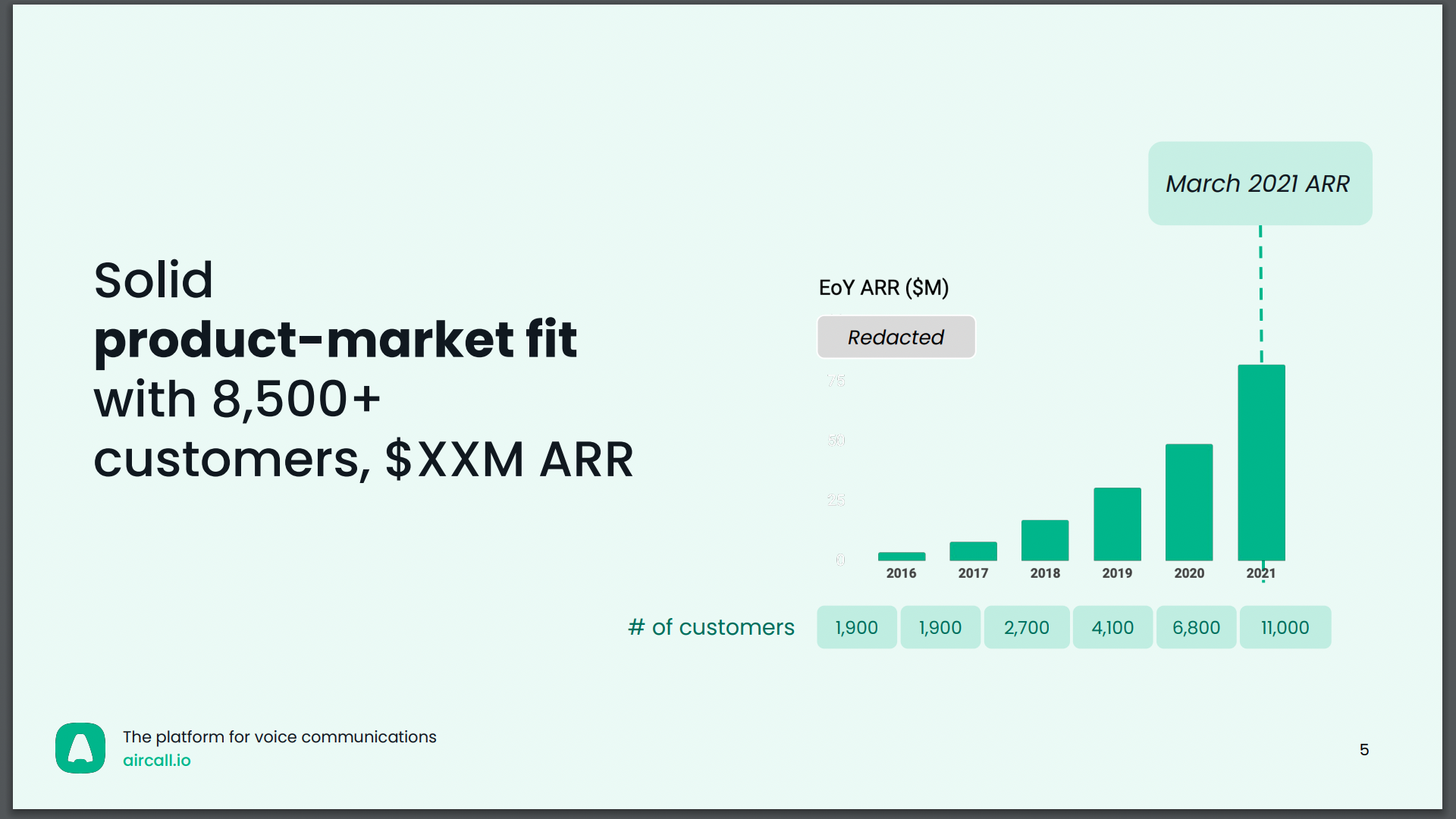
Pendo
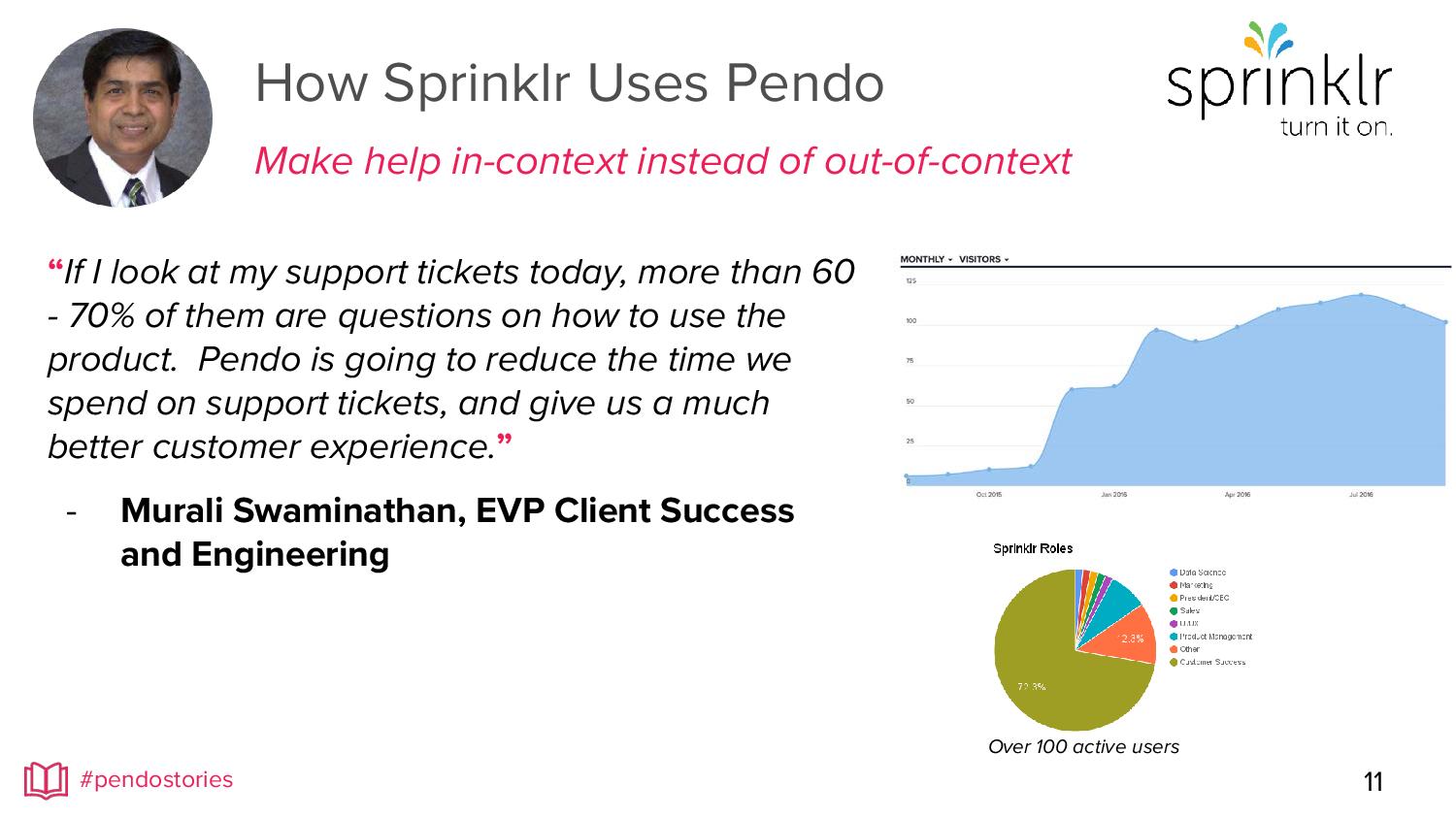
Almanac
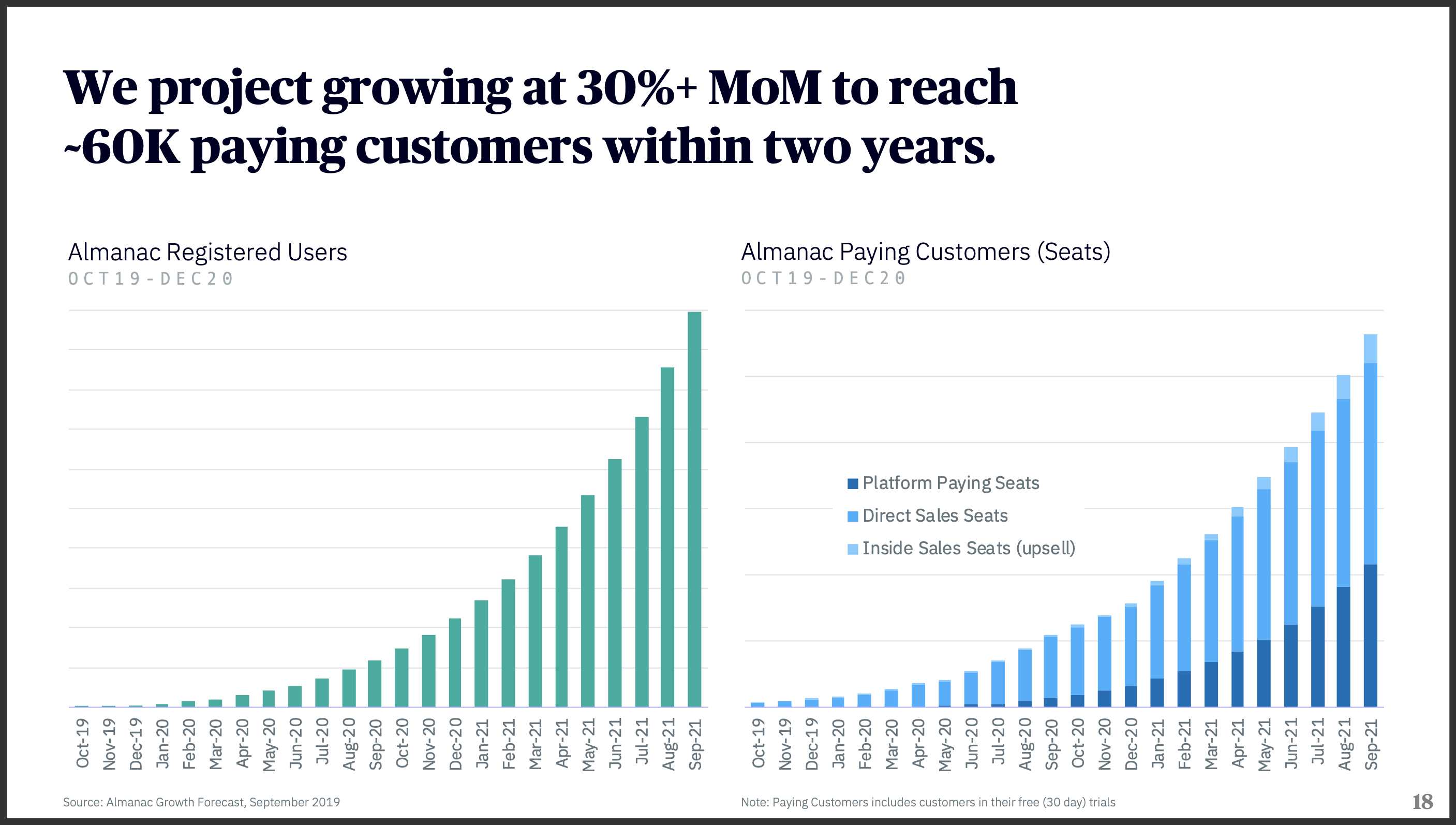
Improve the Rest of Your Pitch Deck
Explore expert tips and resources to perfect every slide in your startup’s pitch deck.
Find your ideal investors now 🚀
Browse 5,000+ investors, share your pitch deck, and manage replies - all for free.
Get Started
